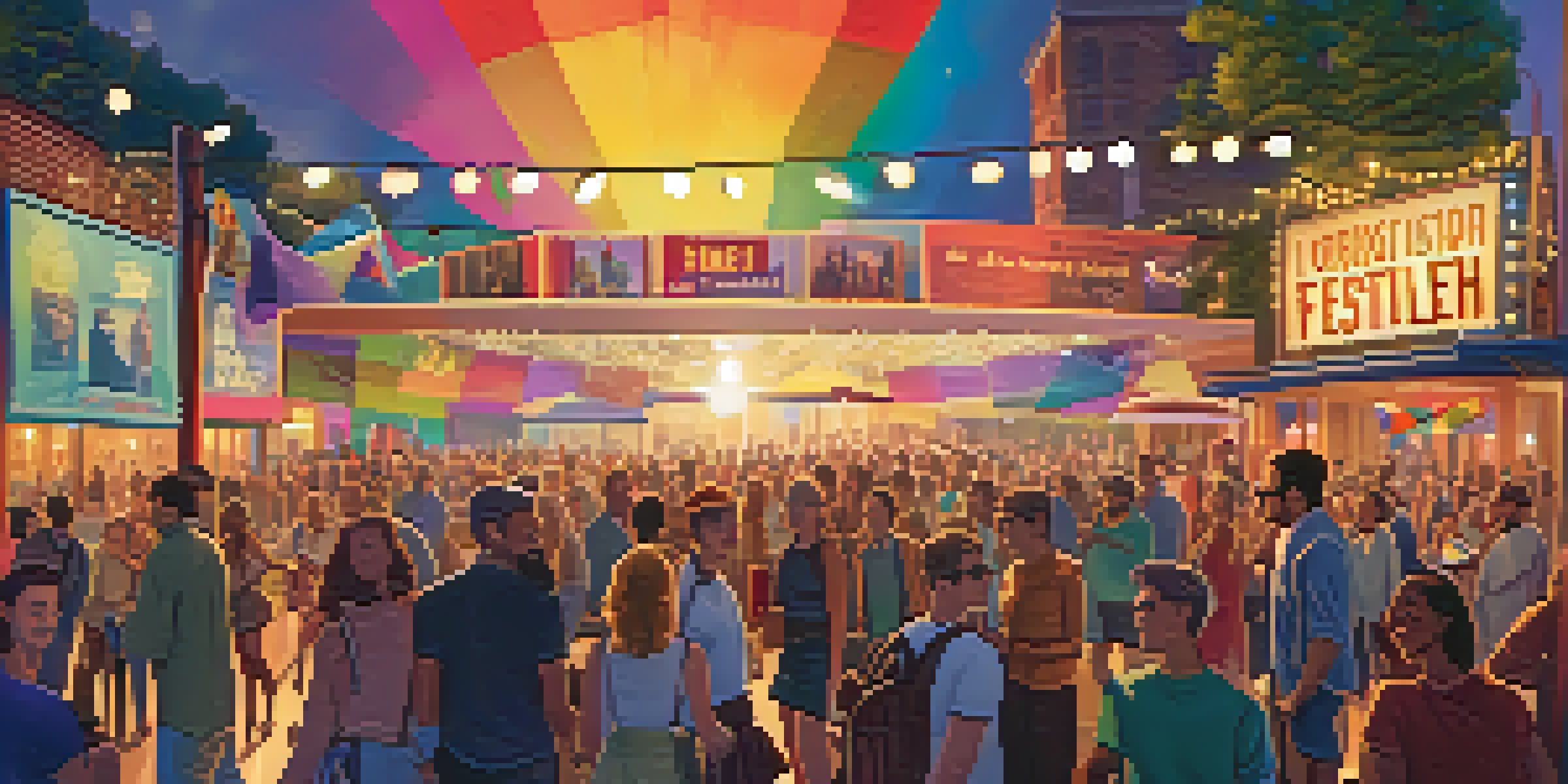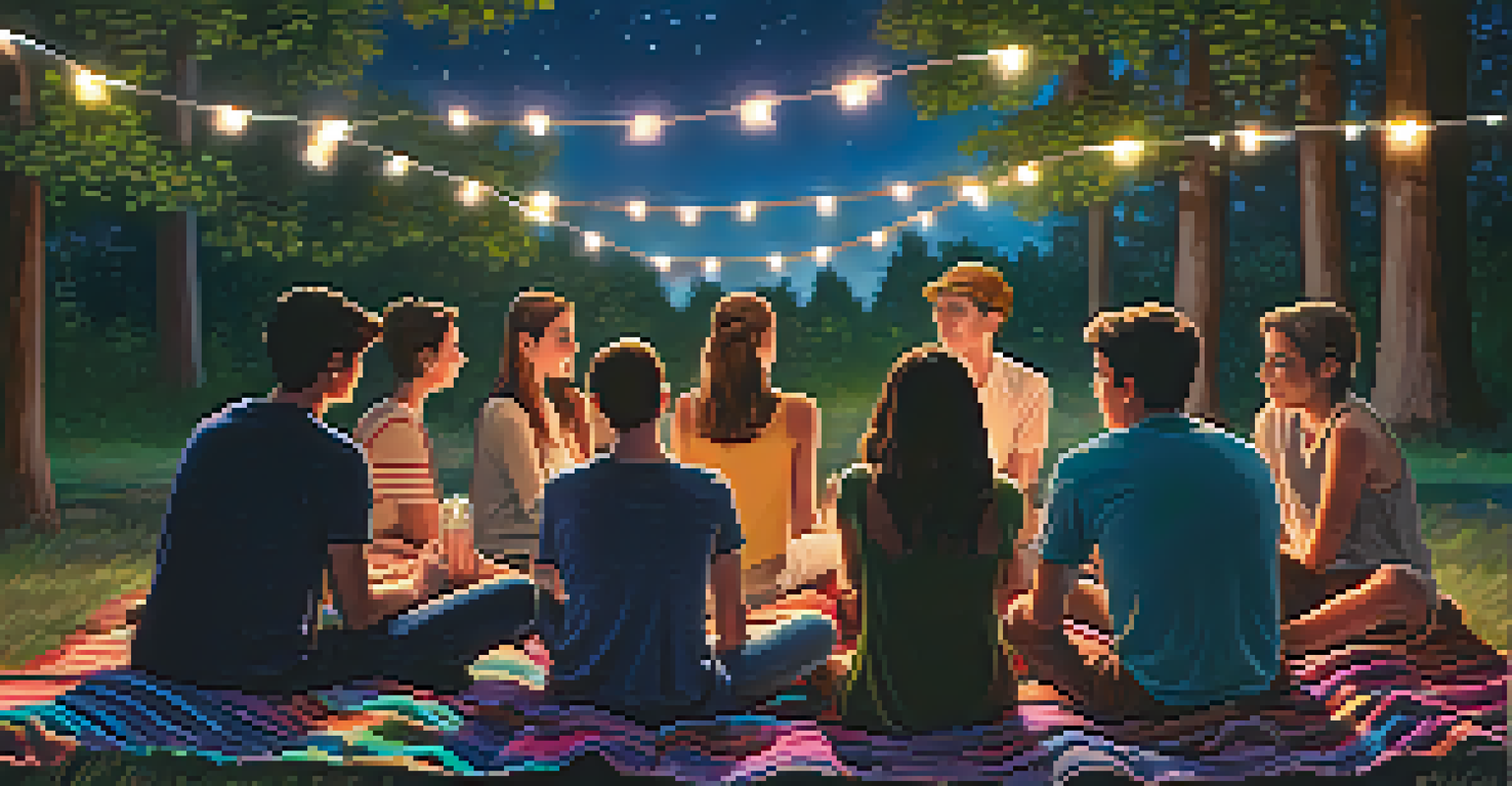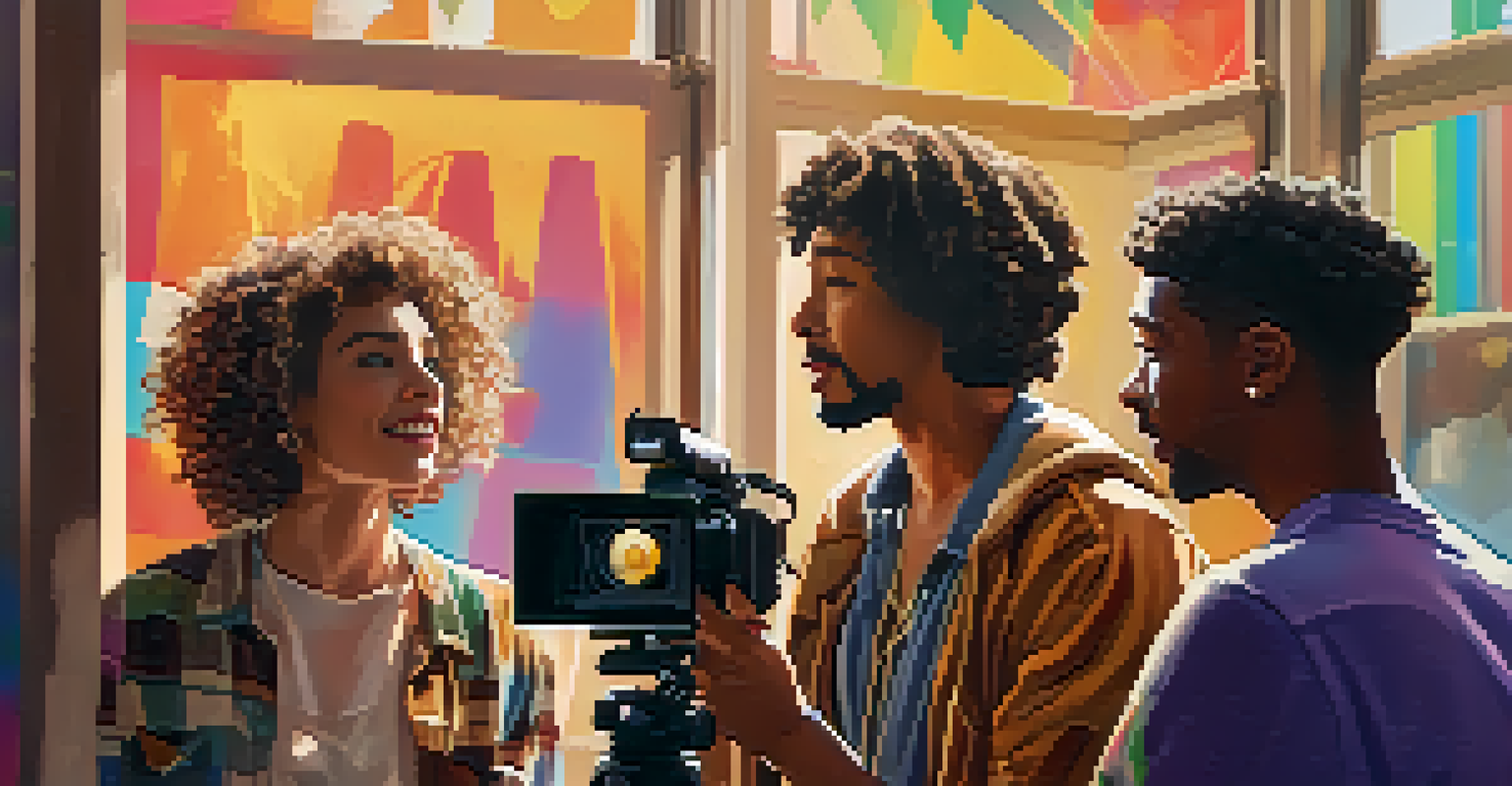Exploring Representation: LGBTQ+ Narratives in Contemporary Film

Understanding LGBTQ+ Representation in Film
LGBTQ+ representation in film is more than just visibility; it's about authentic storytelling that resonates with diverse audiences. For years, many films sidelined LGBTQ+ characters or depicted them through stereotypes, limiting their impact. However, contemporary cinema is making strides by showcasing genuine narratives that reflect the complexities of LGBTQ+ lives. This shift not only enriches the film landscape but also fosters empathy and understanding among viewers.
Cinema is a mirror by which we often see ourselves. We see our values, our identity, and our relationships reflected back to us.
By centering LGBTQ+ stories, filmmakers can challenge societal norms and encourage conversations about identity, love, and acceptance. Think about movies like 'Moonlight' or 'Portrait of a Lady on Fire,' which not only highlight queer experiences but also explore universal themes of connection and self-discovery. These films demonstrate that LGBTQ+ narratives are not just niche but can appeal to a broader audience, breaking down barriers in the process.
As we analyze the evolution of LGBTQ+ representation, it becomes clear that the journey is ongoing. While significant progress has been made, there's still room for growth in how diverse identities are portrayed. The more we see authentic LGBTQ+ stories, the more we can understand the importance of representation in shaping societal perceptions.
The Rise of Authentic LGBTQ+ Storytelling
In recent years, a wave of filmmakers has emerged, eager to tell authentic LGBTQ+ stories that reflect real-life experiences. This movement has given rise to a variety of films that explore different facets of queer life, from coming-of-age stories to romantic dramas. For instance, films like 'Love, Simon' and 'The Half of It' showcase relatable narratives that resonate with both LGBTQ+ and straight audiences alike, emphasizing shared human experiences.

By prioritizing authenticity, these filmmakers are shedding light on issues that have long been overlooked, such as mental health, family acceptance, and the journey of self-acceptance. This not only enriches the narrative but also empowers viewers who may see their own struggles reflected on screen. It’s a reminder that storytelling has the power to connect us across different backgrounds and experiences.
Authentic LGBTQ+ Narratives Matter
Contemporary filmmakers are prioritizing genuine storytelling that reflects the complexities of LGBTQ+ lives, enriching the film landscape.
Moreover, the commitment to authentic representation extends beyond just the stories themselves; it includes hiring LGBTQ+ actors and creators who bring their unique perspectives to the projects. This shift ensures that the narratives portrayed are genuine and resonate more deeply with audiences, ultimately leading to a richer cinematic experience.
Impact of LGBTQ+ Representation on Society
LGBTQ+ representation in film plays a crucial role in influencing societal attitudes and perceptions. When audiences see diverse characters and stories, it humanizes experiences that may be unfamiliar to them. This exposure can challenge prejudices, foster empathy, and promote acceptance, making the world a little more inclusive. Films that celebrate LGBTQ+ relationships, such as 'Call Me by Your Name,' not only entertain but also educate viewers about love in its many forms.
The stories we tell are a reflection of who we are. If we are not telling the stories of LGBTQ+ people, then we are not telling the whole story of our culture.
Moreover, positive representation can have a profound impact on LGBTQ+ individuals themselves. Seeing characters who reflect their identities and experiences can provide validation and comfort, helping them understand that they are not alone. This representation can also spark important conversations within families and communities, paving the way for greater understanding and support.
As more filmmakers embrace LGBTQ+ narratives, the potential for societal change increases. By continuing to challenge stereotypes and share authentic stories, cinema can serve as a powerful catalyst for progress, encouraging viewers to reflect on their beliefs and attitudes towards the LGBTQ+ community.
Challenges in LGBTQ+ Filmmaking
Despite the progress made in LGBTQ+ representation, challenges still exist within the film industry. Many filmmakers face obstacles such as funding limitations, distribution issues, and the ever-present pressure to conform to mainstream expectations. These hurdles can stifle creativity and prevent authentic LGBTQ+ stories from reaching broader audiences. Independent films often struggle to find the support they need to thrive, which can limit the diversity of narratives available.
Additionally, there's the challenge of balancing commercial viability with artistic integrity. Filmmakers may feel compelled to tone down certain aspects of LGBTQ+ narratives to appeal to wider audiences, potentially sacrificing authenticity. As a result, some films may present sanitized versions of queer stories, which can undermine their impact and significance.
Impact on Society and Individuals
LGBTQ+ representation in film fosters empathy and understanding, challenging societal norms and validating the experiences of LGBTQ+ individuals.
Navigating these challenges requires a concerted effort from industry stakeholders, including studios, distributors, and audiences. By supporting independent LGBTQ+ filmmakers and advocating for authentic storytelling, we can help create a more inclusive film landscape that honors the richness of queer experiences.
The Role of Streaming Platforms in Representation
Streaming platforms have revolutionized the way we consume films, and they play a pivotal role in promoting LGBTQ+ representation. With the rise of platforms like Netflix, Hulu, and Amazon Prime, there is now a greater diversity of films available to viewers. These platforms often prioritize original content that reflects a variety of perspectives, including LGBTQ+ narratives that might not have found a place in traditional cinema.
For instance, shows like 'Sex Education' and 'Pose' have garnered critical acclaim for their authentic portrayal of LGBTQ+ characters and themes. By providing a wider platform for these stories, streaming services contribute to a more inclusive media landscape, allowing audiences to explore and connect with diverse experiences. This accessibility is crucial for fostering understanding and acceptance.
Moreover, the global reach of streaming platforms means that LGBTQ+ stories can resonate with audiences far beyond their country of origin. This international exposure can spark important conversations about LGBTQ+ rights and representation worldwide, further emphasizing the role of film as a powerful medium for change.
Iconic LGBTQ+ Films Shaping the Narrative
Throughout history, several iconic LGBTQ+ films have significantly shaped the narrative around queer representation in cinema. Classics like 'Brokeback Mountain' and 'The Adventures of Priscilla, Queen of the Desert' challenged societal norms and opened the door for more nuanced portrayals of LGBTQ+ characters. These films not only captivated audiences but also ignited discussions about the complexities of love and identity.
More recent films, such as 'The Handmaiden' and 'Booksmart,' have continued this trend by presenting fresh perspectives on LGBTQ+ experiences. These films explore themes of love, friendship, and self-discovery while illustrating the diverse ways in which LGBTQ+ individuals navigate their lives. Each of these films contributes to the broader conversation about representation, encouraging filmmakers to push boundaries and tell stories that resonate.
Streaming Platforms Boost Visibility
Streaming services are essential for promoting diverse LGBTQ+ stories, providing broader access and sparking important global conversations.
As we celebrate these iconic films, it's essential to recognize their impact on both the industry and society at large. They serve as reminders of the importance of diverse narratives and the power of storytelling to foster understanding, acceptance, and ultimately, change.
Looking Ahead: The Future of LGBTQ+ Cinema
The future of LGBTQ+ cinema looks promising as more filmmakers are empowered to tell their stories. With the rise of independent cinema and the increasing support for diverse narratives, we can expect to see a broader range of LGBTQ+ experiences represented on screen. Emerging filmmakers are bringing fresh perspectives and innovative storytelling techniques that challenge the status quo and push the boundaries of traditional filmmaking.
Moreover, as audiences become more vocal about their desire for authentic representation, the industry is likely to respond. We can anticipate a continued shift towards embracing diverse identities and experiences, not just in LGBTQ+ narratives, but across all genres. This evolution is integral to creating a more inclusive media landscape that reflects the richness of human experiences.

Ultimately, the future of LGBTQ+ cinema will depend on our collective commitment to supporting diverse voices and promoting authentic storytelling. By championing these narratives, we can ensure that the next generation of filmmakers has the opportunity to share their stories, fostering a more inclusive and empathetic world through the power of film.